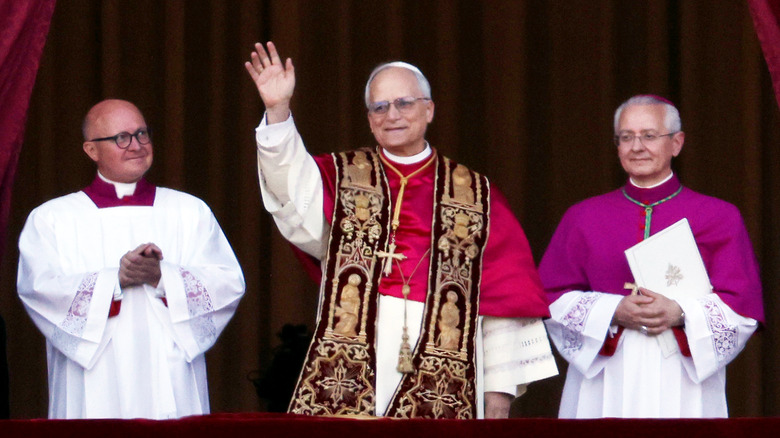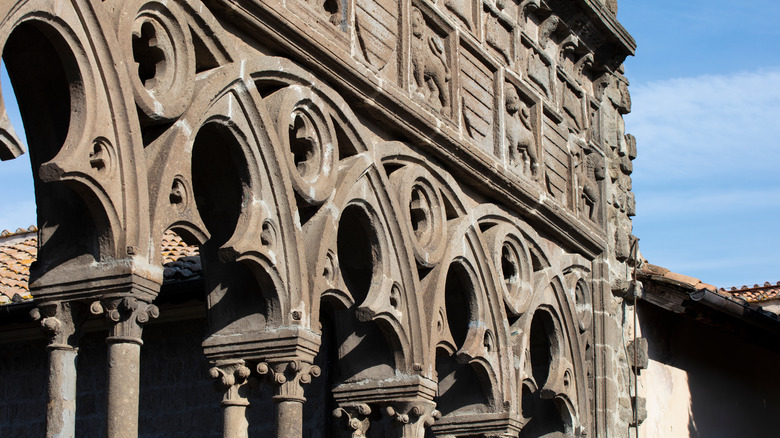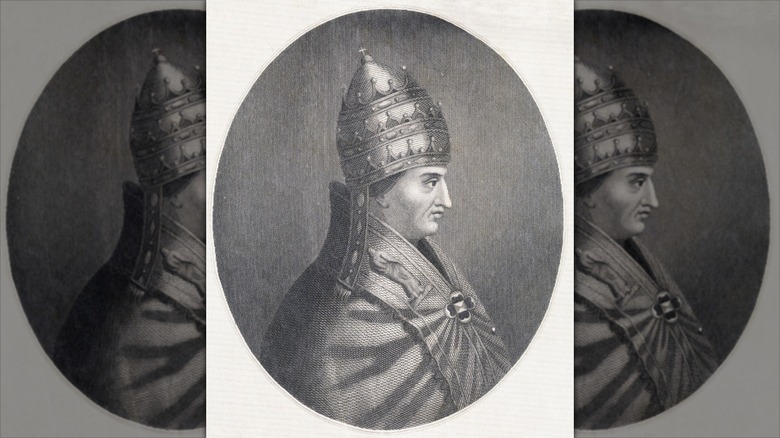Why Townspeople Once Tore The Roof Off Of A Palace During A Papal Conclave
The papal conclave that met on May 7, 2025, 16 days after the death of Pope Francis, was ensconced in the Sistine Chapel. They had zero contact with the outside world, as required. The voting system used to elect a new Pope involves 133 cardinal electors in a multi-round system that has been used for more than 800 years.
The system requires two-thirds of the electors to agree on who shall become the next pontiff. While the cardinals go about their business, a huge crowd of Catholics gathers in the square outside, looking for a white smoke signal to indicate that a decision has been made. They did not have to wait long after the process started on May 7, 2025. It took only until the evening of the following day for the cardinals to give the papacy to Cardinal Robert Francis Prevost, who is now Pope Leo XIV.
But the papal conclave hasn't always gone so smoothly. In 1268, following the death of Pope Clement IV, the decision process took more than two and a half years — 1,006 days to be precise. And it required the local townsfolk to intervene and press the cardinals into fulfilling their duty.
The longest conclave in history
The troubled papal election that began in 1268 took place in Viterbo, located in Italy's Lazio region. Twenty cardinals were summoned, though only 19 took place in the vote as one died in the run-up to it. The period was especially tumultuous for Italy, with the gathering taking place in Viterbo due to Rome being in a state of war. And the electors involved were not immune to the wider political turmoil that was happening at the time of Pope Clement IV's death. During the daily meeting to decide the next Pope, the 19 men found themselves drawn into two rival factions: The Imperials and Corolinians, those aligned with the Holy Roman Empire and those with the king of Sicily and Naples, respectively.
Like today, the rules of the papal election required a two-thirds majority for a new pontiff to be chosen. However, amid other tensions and political disagreements, the group met daily with no change in their position for months on end. They were deadlocked. In frustration, the Viterbese locked the electors in a palace, where they had to camp in tents until their decision was made. The locals even ripped off part of the deliberation room's roof to expose the stubborn electors to the elements, hoping it would get them to budge (they were later allowed into other rooms in the palace). Nevertheless, the locals kept up the pressure by reducing the electors' meals to just bread and water.
Strict rules for cardinals
The deadlock behind the longest papal conclave in history was finally broken in September 1271 with the election of Pope Gregory X. Gregory then set about ensuring that such a standstill in the election process would never happen again. Experts say that the drastic measures used to pressure the warring electors to finally make a compromise formed the template for papal conclaves ever since. For example, cardinals are still expected to be subject to isolation and a period of internment as they make the most important decision in the Catholic faith. In the early days after the Viterbo debacle, the restrictions on food were also retained, though this was soon done away with.
There has never been another conclave that has even come close to lasting as long as 1,006 days. Recent elections have taken around the same amount of time as that which handed the papacy to Leo XIV — roughly two days. The shortest conclave, which took place in 1503, took only 10 hours.
Wanting to lift the lid on those inside the conclave? Here are the dark secrets of the Vatican revealed.


